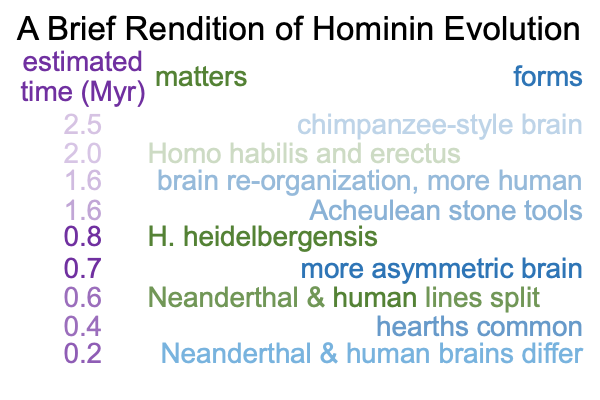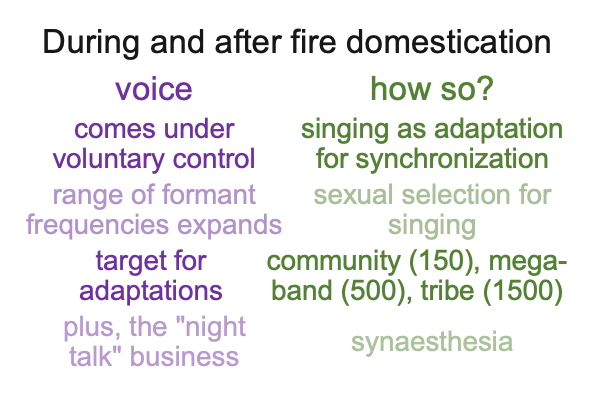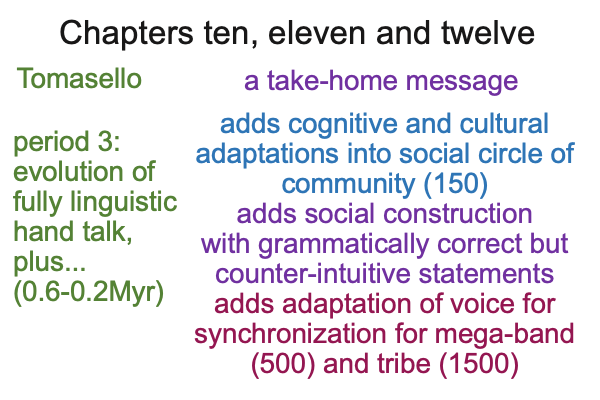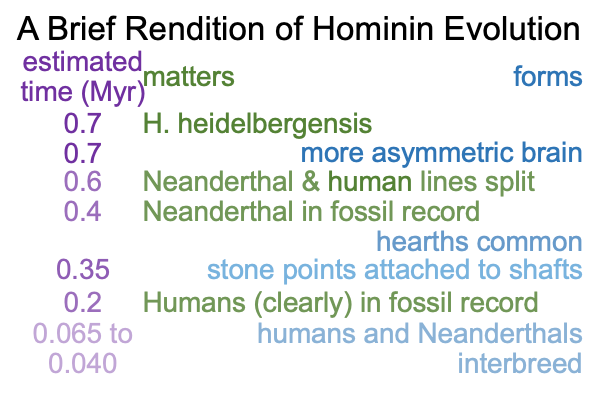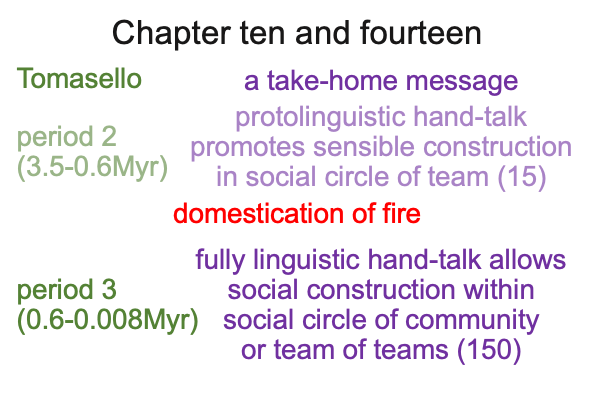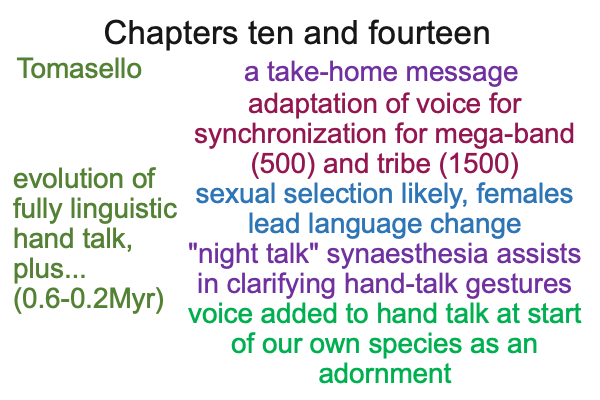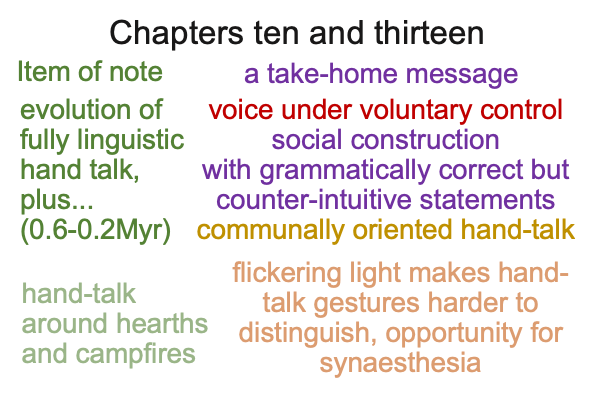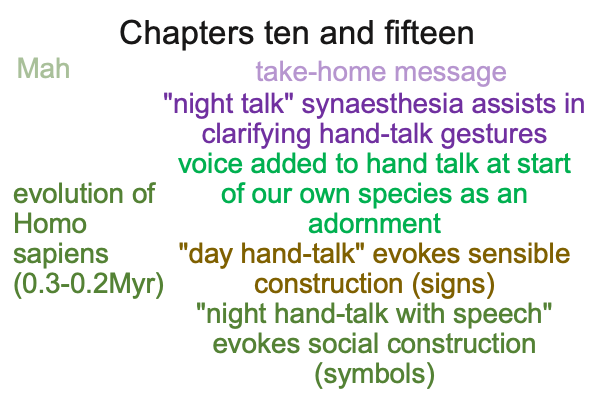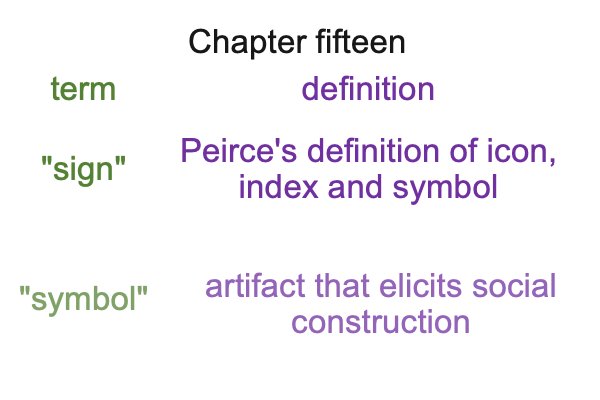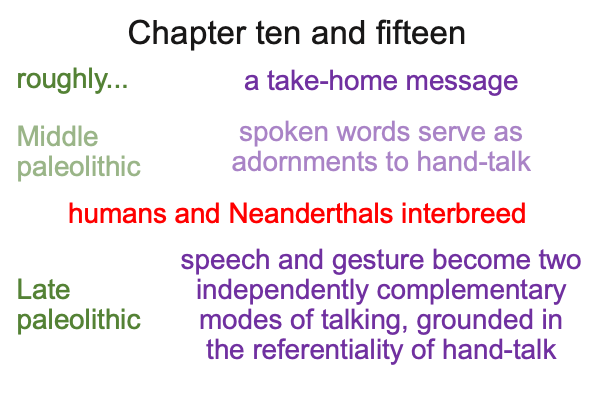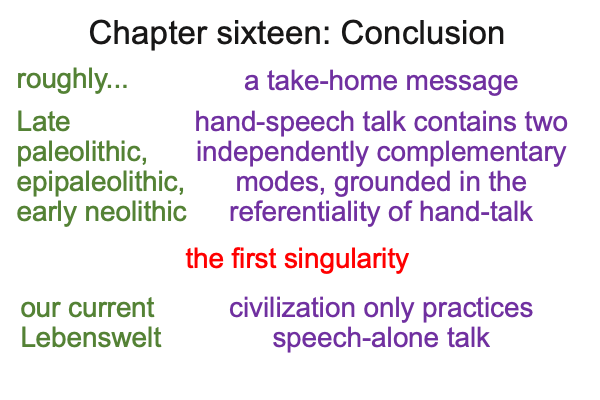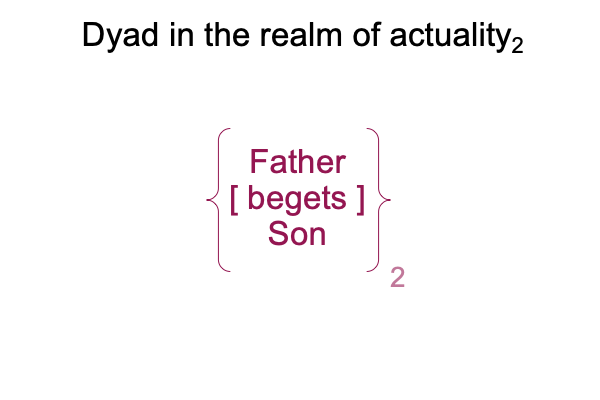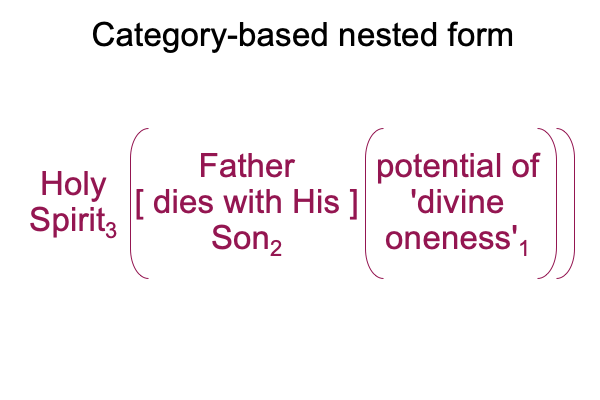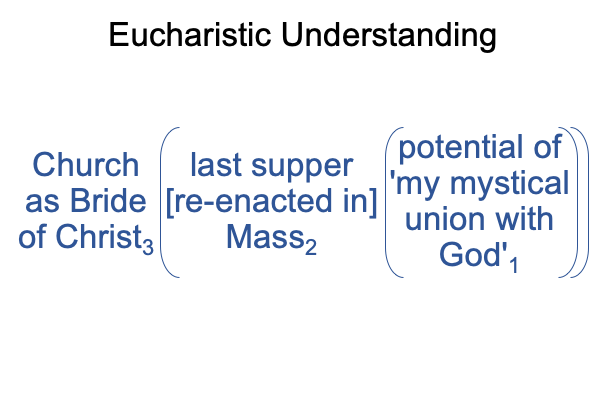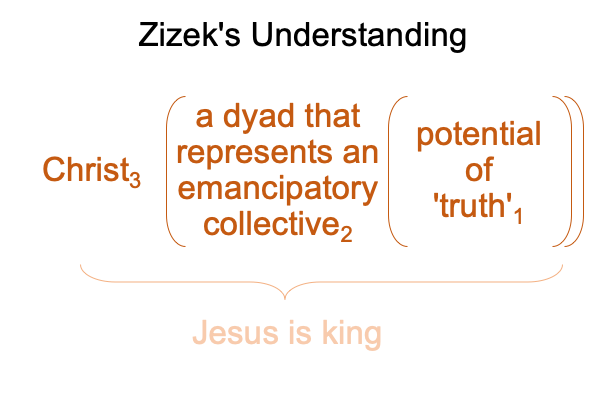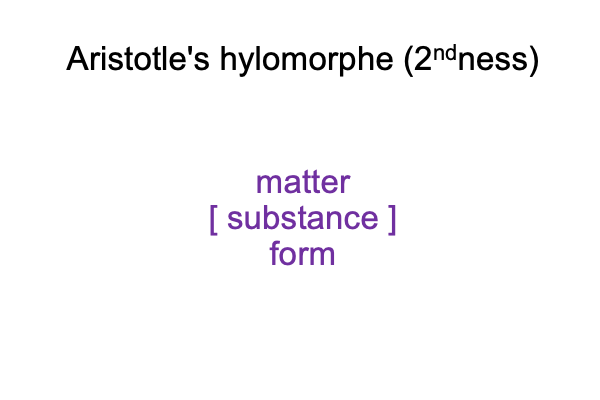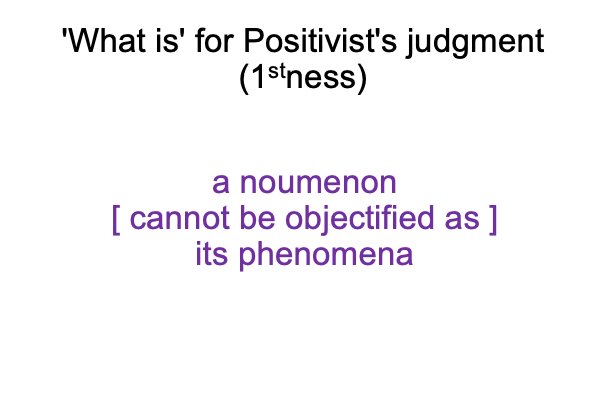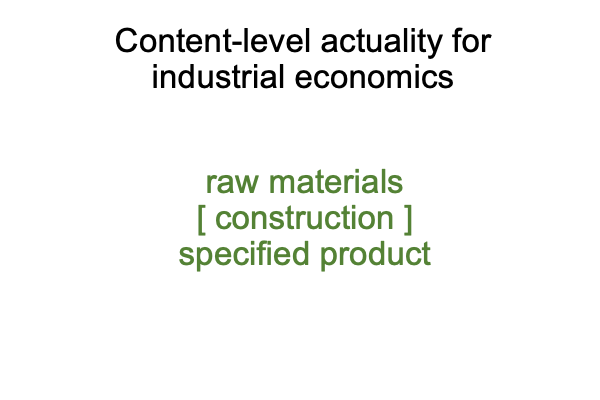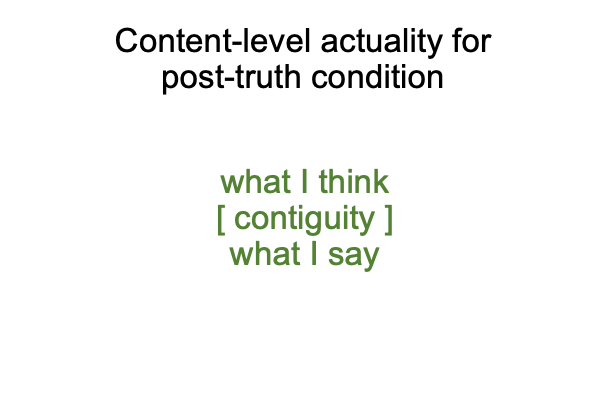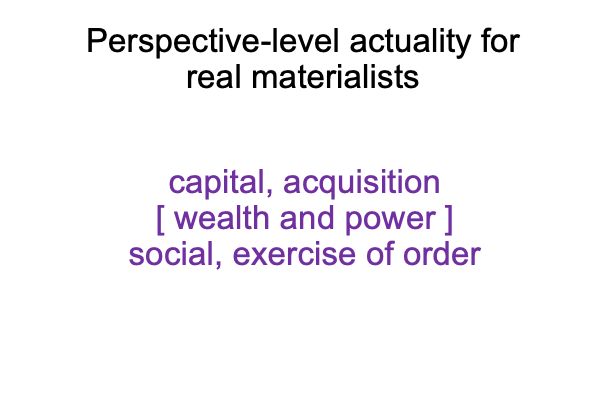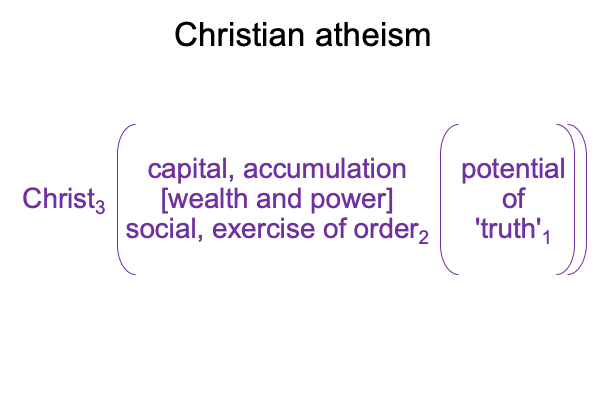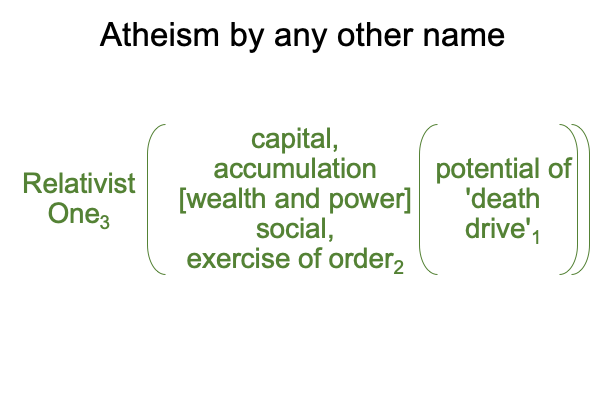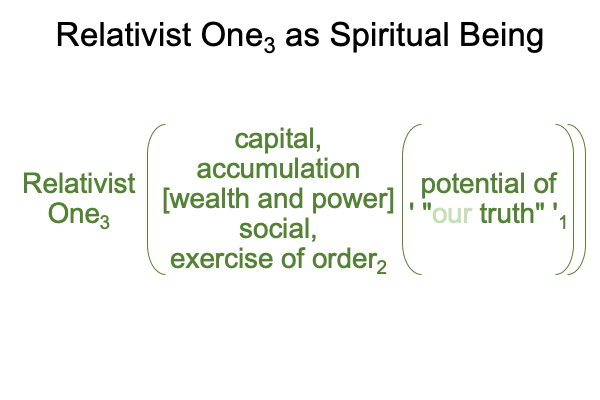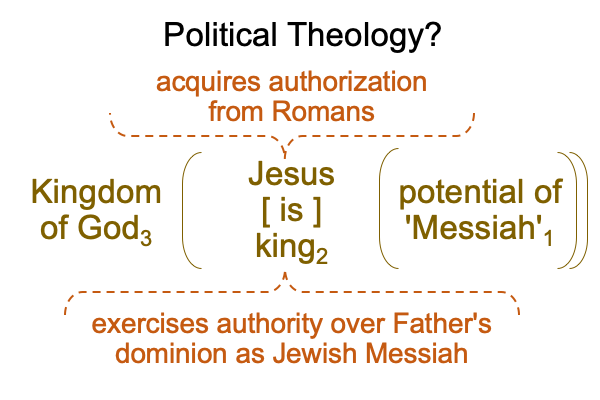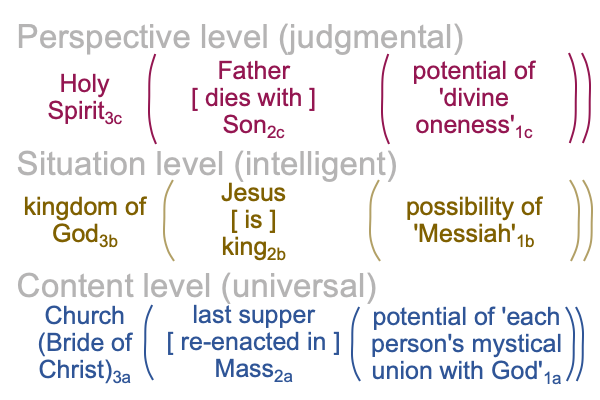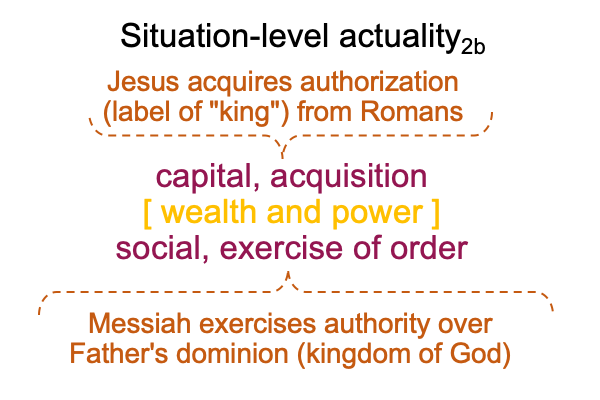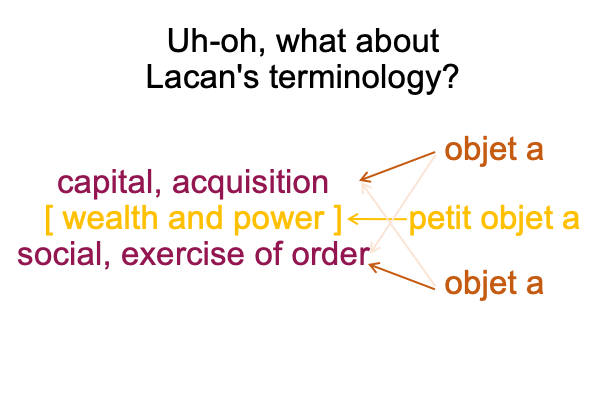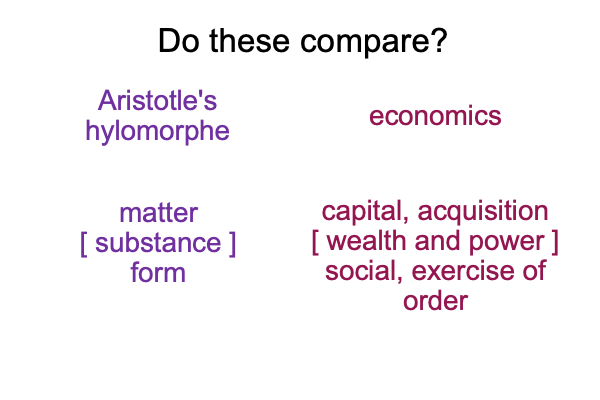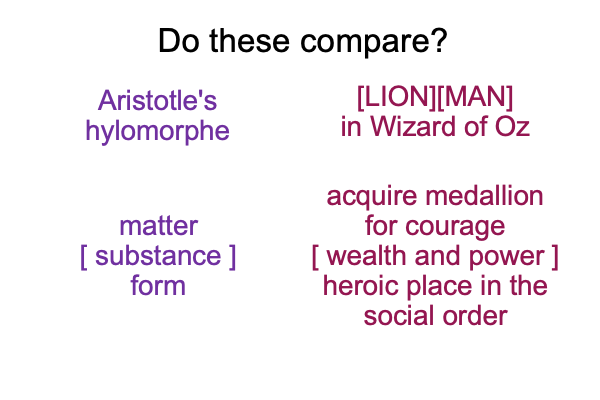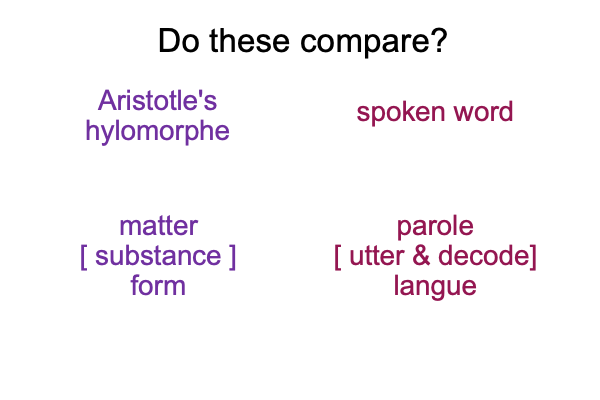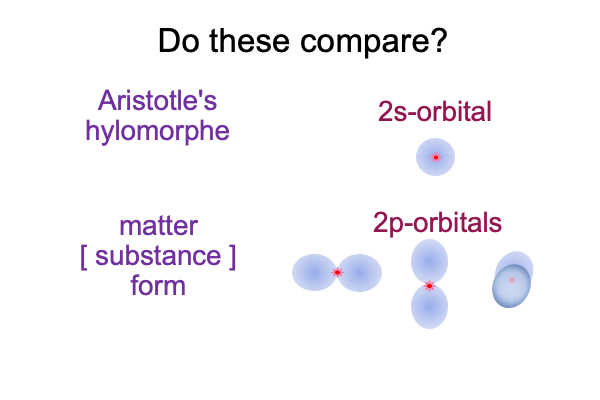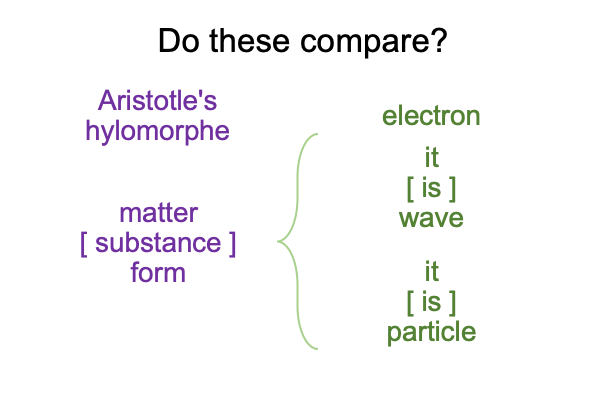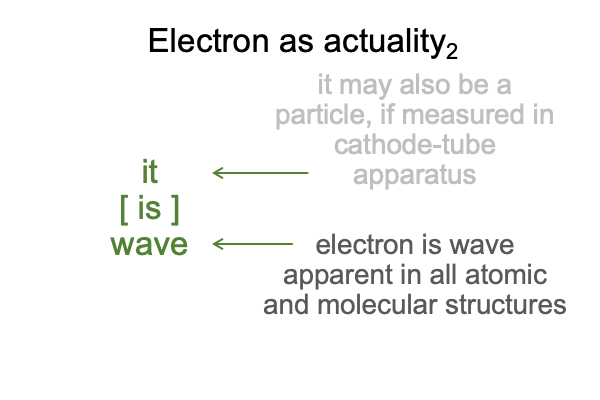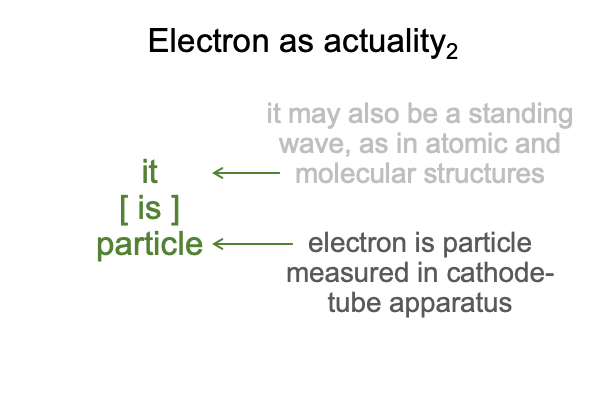How The Voice Gets Added to Hand-Talk In Human Evolution, Part A2 (Part 18 of 23)
0168 The success of Mithen’s metaphor of jigsaw puzzle, when taken literally and applied to manual-brachial gesture-words, suggests the the question that Mithen explicitly addresses is not the problem that Mithen implicitly struggles to solve.
0169 Here is another clue. Chapters two through nine present 8 pieces of his puzzle. Chapters eleven through fifteen present 5. Chapter ten lands slightly offset from the center. Chapter ten is around two-thirds into the book. Chapter ten is brief. Chapter ten is titled “Fire”.
With this in mind, take a look at the three periods of human evolution appearing in Comments on Michael Tomasello’s Arc of Inquiry (1999-2019), by Razie Mah, available at smashwords and other e-book venues.

0170 To me, this is uncanny.
The above figure suggests that the question that Mithen implicitly struggles to solve is not how hand-talk becomes fully linguistic after the domestication of fire, but rather, how the voice gets added to fully linguistic hand-talk.
0171 What happens to proto-linguistic hand-talk commencing with the domestication of fire?
0172 Fire cooks food. In fact, fire cooks a wide variety of foods. Intense heat detoxifies and breaks down the structure of raw foods. More calories and other nutrients are available after cooking with fire.
That means more teams are more successful.
0173 Fire extends the day. Fire cooks food and provides radiance after the sun has set. This new time encourages talking. It is easy to imagine how proto-linguistic hand-talk, routinely practiced within each team, ends up hybridizing into fully linguistic hand-talk.
0174 What is the key difference between proto-linguistic and fully linguistic hand-talk?
Proto-linguistic hand-talk only allows sensible construction. The perspective-level is the team. There is no reason to not be sensible.
Fully linguistic hand-talk allows grammatically correct counter-intuitive statements, such as the name, [image-RAVEN][image-MAN]. The statement defies sensible construction. The content and situation levels that would be apparent inteam activity are missing, and the individual must construct a perspective-level actuality that is shared by every other individual in community.
[RAVEN][MAN] turns out to be a trickster.
0175 Yes, this is the start of what we now call “religion”.
The irony is that the word “religion” is a label and labels cannot be performed using hand-talk. Hand-talk pictures and points to referents that already exist, even though the referent does not have to be present. When considering the spoken label, “religion”, what is there to picture or point to?
[RAVEN][MAN]
0176 How crazy is that?
The evolutionary anthropologists, Michael Tomasello and Steven Mithen, each brilliant in a different way, mint technical labels cannot be pictured or pointed to using hand-talk.
0177 What does this mean?
Remember how natural selection works?
Natural selection is based on the reproductive success of individuals with dispositions and abilities to um… innately perform… the… um… “things”… that evolutionary anthropologists label. This is what our ancestors do. They know not what they do. They do not have labels for what they do. They pantomime and point to referents. They act as living mirrors that only not only reflect the scenes before them, but actually adapt to embody those reflections. As noted in The Human Niche (by Razie Mah, available at smashwords and other e-book venues), our kind adapts to the potential of triadic relations.
But, fully linguistic hand-talk cannot picture or point to those purely relational beings.
0178 Here is a picture of what happens to hand-talk at the start of period three.

0179 So, what about this social construction business?
0180 Well, that vulture tipping off the team as to the presence of a jaguar scene repeats, around a million years after the first story. This time the vulture is so bold as to perch on the tree limb directly above the jaguar. Also, this time I am a member of the species, Homo heidelbergensis, and my brain is as almost as big as a modern human’s. Plus, I have a million of years of selection for throwing behind me, which means I should be a powerful shot.
Because I am much more vigorous and daring than I ever was before, when I run right and throw my rock, the most outrageous event occurs.
0181 The elder tells the tale at the still burning hearth, after we all happily ate the fire-cooked tubers that my team collected.
Here is the story, in hand talk.
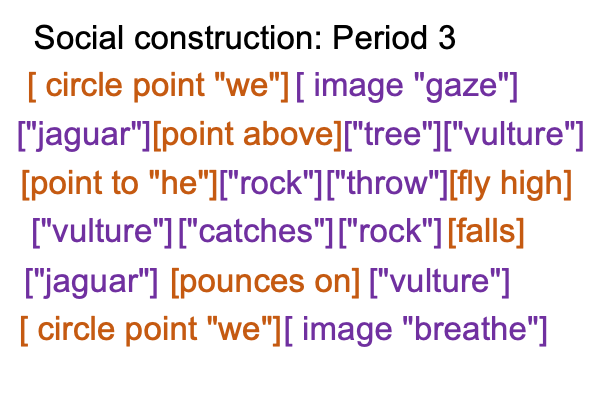
0182 Each gestural-word pictures or points to a referent. Each should be rapidly decoded, because each word-gesture is different from every other word-gesture. In a way, the entire statement can be processed with sensible construction. In another way, the statement demands social construction. This is not simply what happens in a team. This is what happens to all of us.
What happens to all of us adapts to the social circle of community (150).

